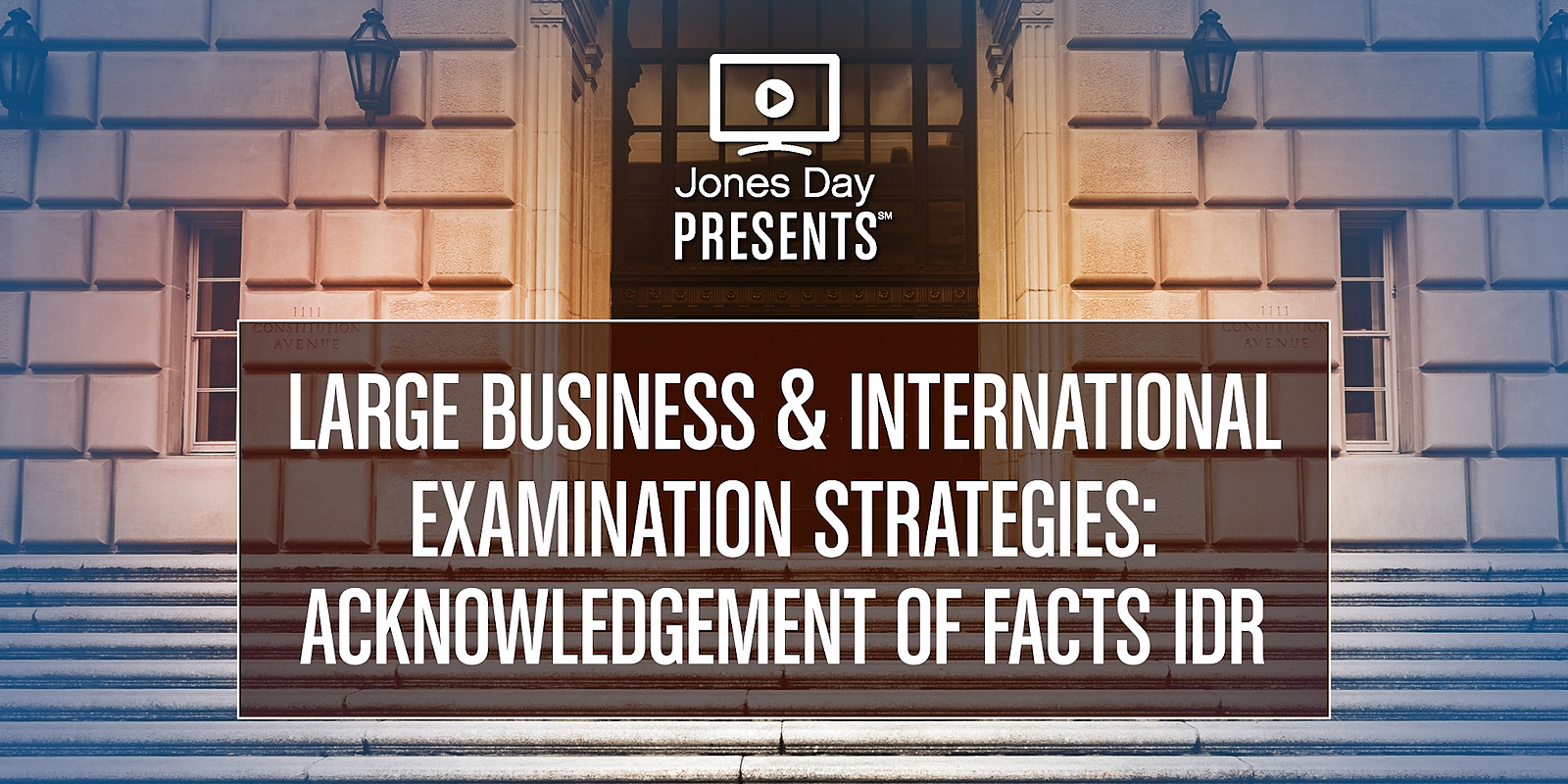
Jones Day Presents: LB&I Examination Strategies: Acknowledgement of Facts IDR
In the third in a series of Jones Day's video presentations on the IRS's Large Business & International Division ("LB&I") exam procedures, partner and tax litigator Chuck Hodges explains the Acknowledgment of Facts IDR, and talks about how taxpayers can use this component of the process to their advantage.
Read the full transcript below:
Chuck Hodges:
In 2016, the IRS Large Business and International Division, or LB&I, changed its exam process. One of those changes, which I think is underrated, is this new concept of an acknowledgement of facts IDR, or AOF IDR. This didn't exist before. What an AOF IDR is, is that, at the end of an examination, there could be an unagreed issue, and the IRS is then going to issue an IDR listing those facts that they believe to be relevant and undisputed as well as the documents that they believe are also relevant and undisputed, and then given the taxpayer the opportunity to respond.
Chuck Hodges:
In many instances, the taxpayers don't respond simply bypassing this process and going straight to appeals to deal with all of the issues, factual and legal. The reason why they do that is because this AOF IDR can not be enforced by summons. But I would just like taxpayers to consider on a case by case basis if maybe the AOF IDR could also be helpful to them and not be a one-sided document, and here's how. Once the taxpayer receives the AOF IDR, first of all, they need to make sure that they receive it after at least the draft NOPA has been received or where the IRS is stating their factual and legal basis for the adjustment to the tax return, because the taxpayer needs to know what issue IRS are you actually dealing with so I know what facts are relevant and not in dispute.
Chuck Hodges:
Once you get this AOF IDR, you then look at it, challenge the facts you believe to be in dispute, but then sharing those facts that you believe are relevant and also not in dispute with the IRS to where it becomes one document for both sides, not one-sided.
Chuck Hodges:
For the tax litigators out there, you're probably thinking, "Well, this sounds a lot like a stipulation of facts in trial." To a certain extent, that is true. It's just one document where both parties agree on some relevant and undisputed facts and documents. This is not just exams facts that are going to appeals. It's both parties, and so both parties should collaborate to come up with one document that emphasizes the relevant and undisputed facts that are out there in the case.
Chuck Hodges:
In a later video, we're going to discuss the impact of the AOF IDR on the appeals process and how it can simplify the appeals process. But again, as an LB&I taxpayer, you need to consider collaborating with exam to stipulate to those facts and documents that you believe are relevant and not in dispute, because it could, in certain instances, help you at the appeals process.


